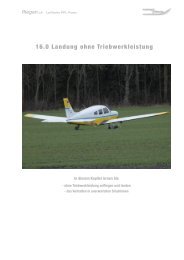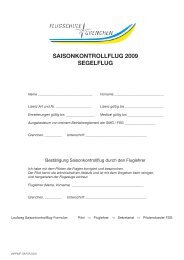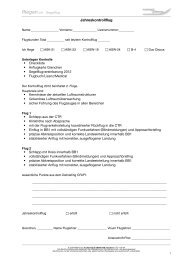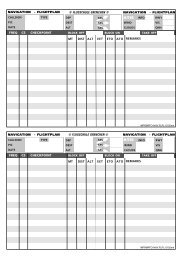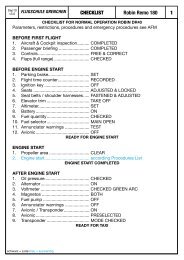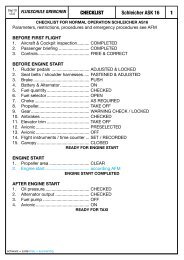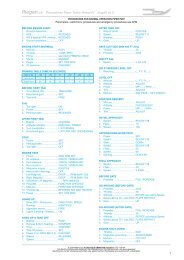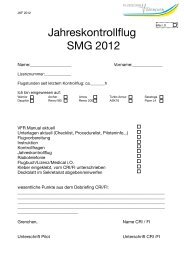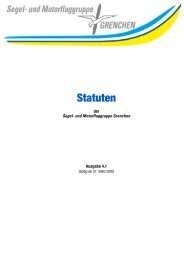400/500 Series Garmin Optional Displays
400/500 Series Garmin Optional Displays
400/500 Series Garmin Optional Displays
You also want an ePaper? Increase the reach of your titles
YUMPU automatically turns print PDFs into web optimized ePapers that Google loves.
TIS information is collected one radar scan prior to the scan during which the uplink occurs.<br />
Therefore, the surveillance information is approximately 5 seconds old. In order to present the intruders<br />
in a “real time” position, the TIS ground station uses a “predictive algorithm” in its tracking software.<br />
This algorithm uses track history data to extrapolate intruders to their expected positions consistent with<br />
the time of display in the cockpit. Occasionally, aircraft maneuvering will cause this algorithm to induce<br />
errors in the <strong>400</strong>/<strong>500</strong> display. These errors primarily affect relative bearing information and traffic target<br />
track vector (it will lag); intruder distance and altitude will remain relatively accurate and may be used to<br />
assist in “see and avoid.” Some of the more common examples of these errors follow:<br />
• When client or intruder aircraft maneuvers excessively or abruptly, the tracking algorithm may report<br />
incorrect horizontal position until the maneuvering aircraft stabilizes.<br />
• When a rapidly closing intruder is on a course that crosses the client aircraft course at a shallow<br />
angle (either overtaking or head on) and either aircraft abruptly changes course within ¼ nm, TIS<br />
may display the intruder on the opposite side of the client than it actually is.<br />
These are relatively rare occurrences and will be corrected in a few radar scans once the course has<br />
stabilized.<br />
Section 1<br />
TIS Operation and Symbology<br />
Users of TIS can render valuable assistance<br />
in the correction of malfunctions by reporting<br />
their observations of undesirable performance.<br />
Reporters should identify the time of<br />
observation, location, type and identity of<br />
aircraft, and describe the condition observed;<br />
the type of transponder processor and software<br />
in use can also be useful information. Since<br />
TIS performance is monitored by maintenance<br />
personnel rather than ATC, it is suggested that<br />
malfunctions be reported in the following ways:<br />
• By telephone to the nearest Flight Service<br />
Station (FSS) facility.<br />
• By FAA Form 8000-7, Safety Improvement<br />
Report, a postage-paid card designed for this<br />
purpose. These cards may be obtained at<br />
FAA FSSs, General Aviation District Offices,<br />
Flight Standards District Offices, and General<br />
Aviation Fixed Based Operations.<br />
3





